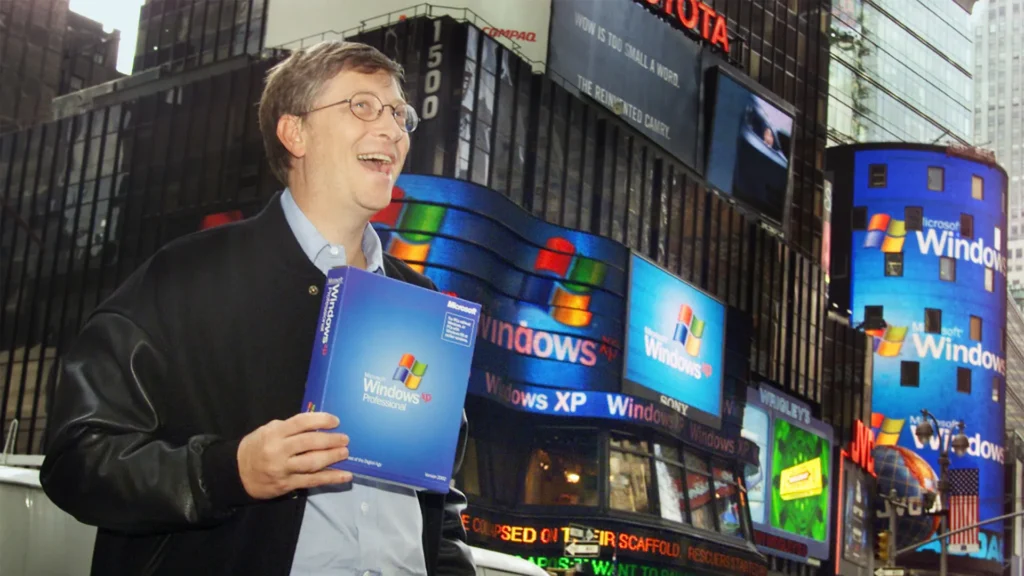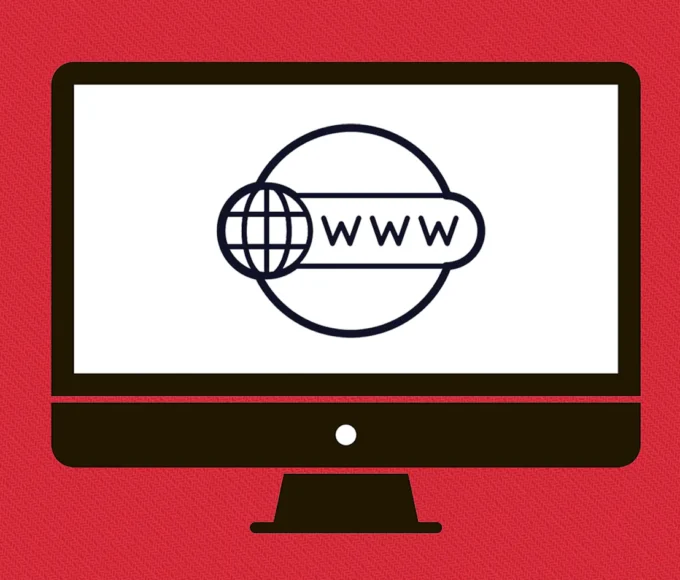The dot-com bubble is often summarized as a crazy spike in tech stocks, a crash, and the end of hundreds of startups with silly names and no business plan. But the truth is much richer, stranger, and more instructive—a fusion of innovation, groupthink, and cautionary lessons that still shape how we think about technology and money.
This article takes you deep into the real story: the origins, the psychology, the players, the boom, the bust, and the seismic aftershocks that are still felt in the tech world today.
The Spark: Hype, Hope, and the Dawn of the Commercial Internet
What started it?
In the early 1990s, the World Wide Web was born, quickly transforming from an academic experiment into the backbone of a new era. With personal computers rapidly entering middle-class homes and businesses, the promise was intoxicating: A digital, connected world could create borderless markets, transform shopping, and make fortunes.
- Tech optimism: E-commerce, email, and online media all felt revolutionary. Early successes like Amazon (1994), Yahoo! (1995), and eBay (1995) showed that online-first companies could disrupt whole sectors and scale at light speed.
- Easy money: Record-low interest rates, tax incentives, and a historic bull market gave investors cash to burn. Venture capital flooded into anything ending in “.com.” Seeking the next Amazon, funding soared. By the late 1990s, nearly 40% of all VC investment was funneled into Internet companies.
The Oxygen: Wall Street, Media, and FOMO
- IPO mania: Investment banks, eager for fees, rapidly promoted initial public offerings for even the sketchiest dot-com ideas. Tech IPOs were no longer rare—they became every ambitious founder’s goal. In 1999 alone, the market saw 457 IPOs, most linked to Internet ventures; in Q1 2000, another 91.
- Media frenzy: Financial magazines and business shows hyped tech visionaries and their ventures. Coverage worshipped start-up superstars and promised “a new economy” immune to old rules.
- Retail investors join: As prices soared, everyday savers—now able to trade stocks online—poured their savings in, hoping to catch the ride. The Nasdaq Composite index, filled with tech names, surged 400% between 1995 and 2000.

1995-1999: The Internet Gold Rush
A New World—Or a New Bubble?
The late 1990s saw the routinization of Dotcom IPOs and unicorns before the word existed:
- “Get Big Fast”: Companies like Pets.com, Webvan, eToys, and Globe.com raced to capture “market share” and consumer mindshare, sometimes spending up to 90% of their budgets on advertising and promotions—often with no meaningful revenue.
- Valuation insanity: Investors ignored profits and even revenue. Multiples were based on eyeballs, page views, or “potential.” Traditional valuation metrics were abandoned for “new economy” logic.
- Banner culture: Pricey Super Bowl ads, parties, and plush headquarters became status symbols. Pets.com’s sock puppet and Super Bowl ad epitomized the era’s willingness to burn cash for fame.
- Esoteric bets: Even companies with unlaunched products received millions. Hotmail, shortly after launch, was bought by Microsoft for $400 million; Yahoo! snapped up web portals at huge prices.
The People Behind the Boom
- Founders and visionaries: Some were brilliant technologists, others little more than salesmen with a website and a pitch deck.
- Venture capitalists: Firms competed fiercely, betting on dozens of startups at once, knowing only a handful would win.
- Day traders and amateurs: Online platforms (e.g., E*TRADE) enabled newcomers to speculate. Stories of overnight millionaires sparked even wider mania.
The Warning Signs: The Bubble Grows Fragile
Too Much, Too Fast:
- Nasdaq fever: From January 1999 to March 2000, the index nearly doubled—a run with few parallels in financial history.
- Insider warnings: Tech leaders like Steve Jobs and Warren Buffet warned that fundamentals still mattered. Few listened.
- M&A excess: AOL’s $182 billion acquisition of Time Warner in January 2000 was the high-water mark, a move widely seen (in hindsight) as foolish and ultimately disastrous.
Pop! March–April 2000: Collapse
The Tipping Point
- On March 10, 2000, the Nasdaq closed at its all-time high of 5,048—an 85% jump from just 12 months earlier.
- Soon after, big tech firms like Dell and Cisco quietly sold large blocks of their own stock, sparking panic. This triggered a wave of automated selling among fund managers and then retail investors, erasing massive gains.
- Within weeks, the Nasdaq lost 10%. By October 2002, it had dropped nearly 77%, bottoming out around 1,139—a fall so steep and broad it wiped out $5 trillion in market value.
Why Did It Happen?
- No profits, no products: Most dot-coms had never turned a profit and some had no product. When capital dried up, burn rates accelerated bankruptcies.
- Venture retreat: As IPO windows slammed shut, VC money stopped. Companies that once planned for infinite growth raced to cut costs and often failed.
- Loss of trust: Media, once champions, turned critical. Investors realized hype could not replace business fundamentals.
The Aftermath: Collapse, Pain, and Survival
Fallout for Companies and Employees
- Startups die: Up to half of all dot-com companies failed. Icons of the era—Pets.com, Webvan, Boo.com—became punchlines. Thousands of workers lost their jobs, and many early paper millionaires lost everything.
- Survivors: A minority—Amazon, eBay, Priceline—suffered plunging stock prices but survived and eventually thrived by pivoting to sustainable models. Giants like Cisco, Oracle, and Intel lost huge share value but remained industry leaders.
- The “Lost Years”: Tech careers slowed, funding dried up, and skepticism replaced blind optimism.
Impact on Investors and the Economy
- Wealth destruction: Up to $5 trillion in wealth vanished globally.
- Market hangover: It took the Nasdaq 15 years—until April 2015—to return to its 2000 peak.
- Recession: While the overall economy remained resilient, a mild recession swept through 2001, and books closed on an era of easy riches.
The Human Story: Dreams, Burnouts, and Reinventions
- Winners: Some tech entrepreneurs used the chaos to buy assets cheap or pivot, building the next wave of companies.
- Burnouts: Thousands of young workers, lured by equity dreams and endless pizza, suddenly faced unemployment and a harsh job market.
- Culture change: The “Silicon Valley work hard/play hard” ethos changed. Frugality, discipline, and real business plans came back in style. The next tech boom—Web 2.0, social media, and mobile—was built by veterans of the crash who remembered the pain of the bust.
What Made the Dot-Com Bubble Different?
- Speed and scale: Never before had markets gone from boom to bust so quickly, fueled by 24/7 news, online trading, viral ideas, and global money flows.
- Vision vs. reality: Many dot-com founders were genuinely visionary, but the lack of business fundamentals and due diligence turned vision into delusion.
- Regulatory blind spots: Old rules for evaluating companies, insider selling, and accounting simply didn’t keep up with the speed of tech or the new forms of capital raising and hype.
- Media’s role: The press went from cheerleading to skepticism almost overnight, moving as a pack with investor sentiment.
How the Bubble Changed Technology Forever
Despite the devastation, the dot-com collapse had a silver lining:
- Infrastructure legacy: Billions spent on fiber-optic networks and servers laid groundwork for streaming, cloud computing, and Web 2.0.
- Modern giants: Survivors like Amazon and Google (which went public post-crash) benefited from less crowded markets and hard-won discipline.
- Investor skepticism: The next generation of investors, entrepreneurs, and regulators became much more discerning—demanding proof of revenue and paths to profitability.
- Global impact: Beyond the US, countries like India saw the promise and pain of dot-com booms and busts, with start-ups such as Satyam Infoway and Rediff.com rising, stumbling, and persisting despite headwinds.
Lessons for Investors and Entrepreneurs
- Don’t ignore fundamentals: Hype can fuel fast gains, but sustainable growth always matters.
- Risk management matters: Diversifying investments, avoiding overconcentration, and knowing when to take profit are crucial.
- Skepticism saves portfolios: Always question why a company is worth what it is. “Eyeballs” are not cashflow.
- Innovation survives busts: Many of today’s greatest tech feats stand on the graveyard of failed dot-coms. Painful innovation lessons enable bigger leaps next time.
- Beware of echo chambers: Whether in newsrooms, social media, or boardrooms—groupthink and fear of missing out can cloud judgment even among the smartest.
Conclusion
The untold story of the dot-com bubble is about more than spreadsheets, IPOs, or Nasdaq crashes—it’s about ingenuity and delusion, risk and resilience. The internet age changed the world and shattered old financial norms. Its early years created fortunes and then destroyed them, but also taught an unforgettable lesson: technology alone doesn’t make a business; at the heart of every market boom or bust are ordinary people—with dreams, fears, and an enduring hope that this time, it’s different.
References / Sources
- Investopedia – Understanding the Dotcom Bubble: https://www.investopedia.com/terms/d/dotcom-bubble.asp
- Wikipedia – Dot-com bubble: https://en.wikipedia.org/wiki/Dot-com_bubble
- Corporate Finance Institute – Dotcom Bubble: https://corporatefinanceinstitute.com/resources/career-map/sell-side/capital-markets/dotcom-bubble/
- AngelOne – Dotcom Bubble Crash 2000: Cause, Impact and Measures: https://www.angelone.in/smart-money/stock-market-courses/dotcom-bubble-crash-cause
- IOSR Journals – The Dot-Com Bubble A Historical Perspective: https://www.iosrjournals.org/iosr-jhss/papers/Vol.28-Issue8/Ser-5/B2808050407.pdf
- Goldman Sachs – The Late 1990s Dot-Com Bubble Implodes: https://www.goldmansachs.com/our-firm/history/moments/2000-dot-com-bubble
- Britannica – Dot-com Bubble & Bust: https://www.britannica.com/money/dot-com-bubble














Leave a comment